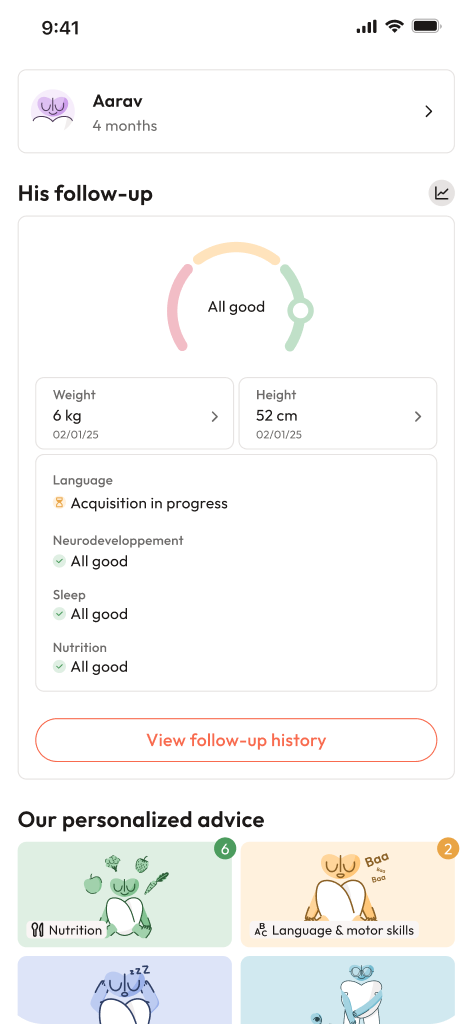Feeling your baby’s kicks become stronger, noticing your belly grow a little more each week, perhaps lying awake at night as excitement and worries mix together — the third trimester is a journey like no other. Amidst this whirlwind, the third trimester ultrasound becomes a central moment. Maybe friends shared their experiences. Maybe you have questions lingering — Should you expect another scan? What exactly will it reveal when birth is just around the corner? If concerns about fetal growth, presentation, fluid levels, or the placenta keep cropping up, you are far from alone. Let’s untangle the medical facts, walk you through the process, highlight the decisions that may come up, and help you step into your next appointment ready and reassured.
Explore what makes the third trimester ultrasound distinct, how it checks your baby’s growth, detects position and health signs, measures amniotic fluid and placenta, and what insights it brings for your birth plan. Expect clarity on preparation, what the scan evaluates — and, in case an abnormality does appear, what happens next. Let’s journey together through evidence-based information, practical tips, and a rhythm that matches the pace of late pregnancy itself.
What Is a Third Trimester Ultrasound? Distinct Focus and Timing
A third trimester ultrasound is not just a repeat of the scans you might have had earlier in pregnancy. It arrives typically between 28 and 42 weeks — with a strong preference for the 31–33-week window (near 32 weeks for many). Unlike the extensive anatomy scan from the second trimester, this time the spotlight shifts. Now, clinicians are less focused on cataloguing every bone and organ shape, instead aiming to chart fetal growth, map out the amniotic fluid (AFI or deepest vertical pocket), track the placental location, verify presentation (head-down, breech, or other), and use focused Doppler studies where necessary to check for blood-flow patterns in vital vessels.
So, what does this mean in practice?
- Is your baby growing as expected on the curve, or is there a hint of slowed or excessive growth?
- Is the placenta positioned safely, far enough from the cervix?
- How generous or scanty is the fluid around your baby?
- Does the baby’s position suggest that a vaginal delivery is likely, or could a breech persist?
- Are there signs suggesting closer watch — such as reduced fetal movement, maternal hypertension, or diabetes — prompting more frequent checks?
For some families, one late scan suffices. For others, particularly if risk factors pop up (size discrepancies, multiple pregnancies, suspected growth issues), the number may increase to every 1–3 weeks. Rhythm and timing are decided together with your clinicians, keeping your unique scenario in focus.
Preparation and Procedure: What to Expect on the Day
No need for an elaborate morning routine here. Most clinics do not request a full bladder, and no dietary restrictions are imposed. Instead, a practical tip: skim off lotions or creams a couple of days beforehand (they might create a blurry barrier for the ultrasound waves). Dress in clothes that roll or lift easily above the abdomen. Carry along prior scan reports and any recent blood work, as these snapshots from your pregnancy journey help the radiology team draw comparisons.
At the clinic, the session is led by a trained sonographer, obstetrician, or sometimes a midwife. You’ll recline on a couch, cool gel smoothed over your belly as the probe creates streams of images. While 2D imaging is the mainstay — capturing sharp, clinical measurements — 3D or 4D may be used for surface visuals when the baby is in an ideal spot, although all medical decisions are rooted in those 2D shots and Doppler flows for technical reliability.
Expect about 20–30 minutes for a single baby; slightly longer if twins or an elusive position challenge the clarity. Here’s a snapshot of steps you might experience:
- Brief outline of what will be checked.
- Systematic sweeps across the uterus, capturing biparietal diameter, head and abdominal circumference, femur length, all plotted on gestational age charts for growth trajectory.
- Placental review: position (anterior, posterior, fundal), appearance, cord insertion.
- Amniotic fluid: measured with precision — oligohydramnios (<5 cm or pocket <2 cm) and polyhydramnios (>24–25 cm or pocket >8 cm) flagged for action.
- Confirmation of baby’s lie and their presentation.
- Doppler flows: umbilical artery, sometimes uterine and middle cerebral arteries, if needed.
- Summary feedback, immediate or in a detailed report.
Wondering about safety? Parent voices sometimes hesitate — sound waves only, no X-rays involved. The teams follow ALARA principles (minimum energy, optimal results). “Entertainment scans” without clinical oversight, however, are discouraged — it’s not a photoshoot, but a powerful medical tool.
What the Third Trimester Ultrasound Really Assesses
Fetal Growth: Are Percentiles Just Numbers?
Those growth charts and percentile lines can seem cryptic. In a third trimester ultrasound, several measurements — biparietal diameter (BPD), head circumference (HC), abdominal circumference (AC), femur length (FL) — all coalesce into an estimated fetal weight (EFW). However, here’s the clincher: EFW comes with an average margin of error, often ±10–15%. A baby that looks “big” or “small” in numbers may — on birth — surprise everyone! Interpretation always happens in context: parental build, previous scans, interval change, and any clinical red flags (for instance, maternal high blood pressure, diabetes, or history of small-for-dates baby) set the scene for decisions.
Challenges to accuracy? Perhaps baby’s head is deep in the pelvis, or their back hugs your front. Maybe prior C-section scars, high or low amniotic fluid, or body type affect how clear the picture comes out. Operator experience and machine quality count too.
Assessing Fetal Well-being and the Biophysical Profile
Sometimes, a deeper reassurance is needed. Here, the biophysical profile (BPP) may be used — watching not just movements, but the baby’s muscle tone, breathing-like motions, and heart activity. High scores suggest everything is ticking along well; borderline ones vote for closer follow-up, and if scores drop, it may prompt an urgent re-think: extra monitoring, possible supplementation for lung maturity (such as steroids), and discussions about timing birth.
Amniotic Fluid: Not Just About Volume
Fluid assessment is essential — too little (oligohydramnios) could hint at placental issues or a ruptured membrane, too much (polyhydramnios) sometimes signals diabetes or concerns with swallowing or gut function. Both extremes flag up for more frequent testing, tweaks in monitoring, and sometimes planning induction or C-section.
Placenta and Cord: Position and Function Matter
Is the placenta low (placenta previa), covering or too close to the cervix? Persistent issues close to term often mean planning a caesarean in advance for safety. Rarely, concern grows over placenta accreta spectrum (where the placenta “sticks” too deeply) or odd cord insertions — prompt specialist teamwork leads here. Eternal question: Is a loop of cord around the baby’s neck dangerous? Usually not — a “nuchal cord” is common and rarely impacts a healthy delivery plan, though it’s recorded for reference.
Baby Position and Delivery Planning
At around 32 weeks, breech or oblique positioning is not unusual. Most babies do an acrobatic roll to head-down by 36–37 weeks, but if not, an external cephalic version (ECV) may be considered — a gentle but skilled maneuver to turn baby, if the conditions are right. Uterine shape, placental site, or scars can affect whether ECV is prudent.
Doppler: Blood Flow Patterns, Not Just Pretty Pictures
When indicated (often in cases of suspected growth restriction), Doppler ultrasound steps in, assessing:
- Umbilical artery for placental resistance.
- Middle cerebral artery for baby’s “brain sparing” response.
- Uterine arteries for maternal-side flow.
Changes here — say, high umbilical resistance or reversed blood flow, or low indices in the brain artery — drive closer monitoring. Decisions here are technical, evidence-backed, yet tailored to each scenario.
Cervical Assessment: When and Why
A transvaginal look at the cervix is reserved for when preterm labour risk is a query, rarely becoming routine after 28 weeks as prediction value decreases.
3D and 4D Imaging: More for Memories
While 3D/4D visuals can capture that first glimpse of a hand or yawn, the clinical backbone remains 2D. Sometimes, these images assist if facial or external anomalies are suspected, but their diagnostic value is limited compared to standard views.
Interpretation of Results and Birth Planning
So, what happens if the scan flags small-for-gestational age or suspected growth restriction? The third trimester ultrasound helps distinguish physiologically small babies from those at risk (for instance, due to placental issues), guiding whether more rigorous surveillance or even early delivery is considered. The flip side — suspected macrosomia — triggers a fresh debate on delivery route, risks of shoulder dystocia, induction, or planned caesarean.
Low or high fluid, placental changes, or persistent non-head-down positions? Each finding gets discussed dynamically, neither guaranteeing nor ruling out a specific birth path, but equipping parents and clinicians with real-time information.
Twins or multiples? The birth plan becomes even finer-tuned: chorionicity (do they share a placenta?), growth discrepancies, or unique Doppler patterns receive specialist attention.
Note, late scans rarely overrule your estimated due date unless absolutely no early dating exists to guide the process.
Special Situations and the Scan’s Limits
No ultrasound is omniscient. EFW gives an average estimate, but nature sometimes surprises everyone in the labour room. Technical issues — maternal body shape, fluid extremes, fetal position, even abdominal scars — may obscure clear pictures, sometimes triggering repeat scans or complementary tests.
Pregnancies complicated by diabetes, hypertension, preeclampsia, autoimmune disease, or kidney issues call out for a tailored plan and usually more frequent, targeted scans.
Ultrasounds provide valuable reassurance, but cannot rule out all subtle structural, metabolic, or genetic difficulties — nor can they tell you everything about how your baby will thrive post-birth.
Practical Aspects: Cost, Coverage, and Next Steps
For those with medical indications (like high blood pressure or fetal concerns), insurance often covers the third trimester ultrasound — but check specifics with your policy. For self-pay parents, request cost estimates, and ensure documentation of the reason for your scan.
Afterwards, interpretation happens as a dialogue. Sometimes a repeat scan, more frequent tests, or specialist referral follows. Occasionally, it means hospital admission for daily observation (for example, serious fetal growth restriction). Key clinical results combine with your symptoms, blood pressure, and baby’s kicks to build an ongoing, responsive plan.
Abnormal Findings: What Comes Next?
Should the scan detect something unexpected — abnormal Doppler, restricted growth, low fluid, or malpresentation — further tests are ordered with urgency that matches the finding. This might mean another third trimester ultrasound, continuous fetal monitoring, MRI, or echocardiography for heart anomalies. Timing balances medical urgency and thoughtful family planning.
Clear, supportive communication is your right. Request a written summary, compile questions, and never hesitate to seek a second opinion if complicated news arises. Paired with medical expertise, emotional support becomes vital, especially in complex situations.
Sometimes, lifestyle changes such as reduced work, no travel, or even inpatient stay are suggested for maximum safety. All these steps, and their rationale, should be documented in your maternity record — ensuring everyone involved in your care is on the same path.
Key Takeaways
- Third trimester ultrasound is a targeted, late-pregnancy scan focusing on growth, amniotic fluid, placental health, presentation, and baby’s well-being.
- Commonly performed at 31–33 weeks, with additional scans if there are special concerns: growth, fluid, twins, maternal conditions.
- Measurements include biparietal diameter, head/abdominal circumference, femur, plus Doppler, all guiding clinical care.
- Results inform the next steps: frequency of checks, possible interventions, and birth planning — but are interpreted together with your whole pregnancy history.
- The tool is safe, using sound waves only, with “as low as reasonably achievable” energy to protect both parent and fetus.
- Emotional and practical support, clear communication, and multi-specialist input help families approach labour and birth with confidence.
- For continuous guidance and tailored health questionnaires, explore the free Heloa app, unlocking expert advice for every stage.
Questions Parents Ask
How many ultrasounds do I need in the third trimester?
Most low-risk pregnancies need no routine scan after 20 weeks, unless there’s a medical condition or concern. If your clinician wants to check growth, baby’s position, or fluid, expect a single third trimester ultrasound at 32–36 weeks. If problems show up (growth issues, diabetes, high blood pressure, twins), scans might repeat every 1–3 weeks. Scans are timed to match your needs, not a set calendar.
Will the scan tell the baby’s sex late in pregnancy?
Often yes — if the baby’s position and fluid offer a clear view. Sometimes, if the baby’s head is low in the pelvis or the legs are crossed, it’s tough, even with the best machines. Clinics usually concentrate on health checks, not just gender, so ask in advance if knowing is important.
If a concern is spotted, will I know immediately? What is the next step?
For most urgent or important findings, your provider shares a verbal summary in the appointment. A report with measurements and recommendations follows. If something serious is noticed, a repeat third trimester ultrasound, Doppler testing, or even referral to a specialist (maternal-fetal medicine, neonatology) may be arranged right away. Additional steps are based on urgency, gestational age, and your unique context.
What exactly will you look for in my scan?
Growth, fluid, placenta, and baby’s presentation are standard. If you have high blood pressure, diabetes, or previous complications, Doppler and more frequent scans might be included.
What questions should I bring to my scan appointment?
- How is my baby’s growth compared with last scan?
- What is the estimated weight, and how confident is that number?
- Is the baby’s head-down yet? If not, do I qualify for turning the baby (ECV)?
- Where is the placenta? Any issues with cord?
- Amniotic fluid is normal or needs follow-up?
- Should extra monitoring, a biophysical profile, or repeat ultrasound happen?
- How will this update affect our birth plan?
- What’s the expected next step if intervention is needed?
Are third trimester ultrasounds safe, especially with more scans?
Ultrasound — both transabdominal and, where necessary, transvaginal — is widely regarded as safe, with no ionising radiation. Medical teams use minimum energy and shortest time to get clear answers, following international standards.
What happens if scan results are uncertain or images unclear?
If baby’s position, low amniotic fluid, or body type hide images, a repeat third trimester ultrasound may be scheduled or an alternative test suggested. Your team adapts based on your needs, always prioritising safety and clarity.
For any step along the way, practical support and expert knowledge are never far — consult your healthcare provider, and if you desire personalised, ongoing tracking and answers, don’t hesitate to download the Heloa app any time.

Further reading :









